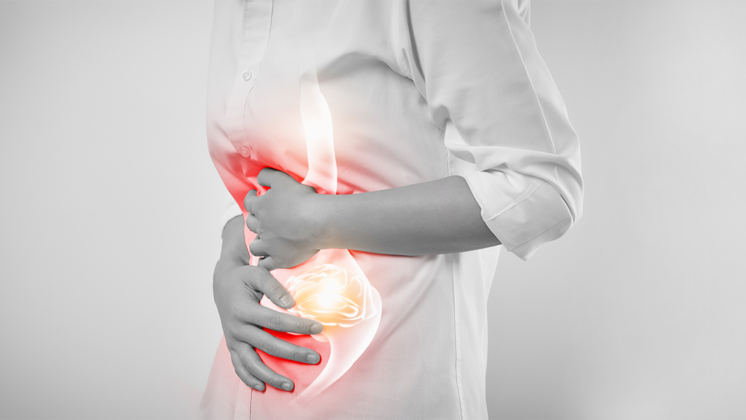How to remove gas from your stomach instantly
Gas is a fact of life. We eat, digest, burp and toot. In fact, you’ll likely pass gas — either by belching or through flatulence — up to 2 dozen times today. That’s normal! It can be embarrassing or funny, depending on your sense of humor. But sometimes gas won’t pass as easily or as quickly as you’d like. When that happens, it can cause pain in your abdomen, which might be severe. There are two main reasons:

Digestion When the food you eat is broken down by the bacteria in your digestive tract, that process produces gas. Some foods, especially higher-fiber foods, produce more gas than others. If you eat a lot of whole grains and fiber-rich veggies (which you should!), you may experience more gas.
Swallowing air Air is a gas, and you can swallow too much of it if you eat or drink too quickly, chew gum, smoke or use a straw. There are also foods that contain a lot of air — ice cream, bread and apples. The more air you swallow, the more gas ends up in your belly.
“When you swallow air, the vast majority will not be absorbed,” says gastroenterologist and clinical professor. “Either you belch or burp it up, which is the body’s normal way of getting rid of it, or it’s going to come out the other end several hours later.”

Gas pain rarely indicates a serious problem, but it can be seriously uncomfortable.
Certain home remedies for relieving trapped gas work better for some people than others. You may have to experiment to see what works best and fastest for you. Most of the evidence behind these home remedies is anecdotal.
Here are some quick ways to expel trapped gas, either by burping or passing gas.
Burping or belching: Sometimes this is all you need to do to eliminate trapped gas and relieve your discomfort. Of course, that might be easier said than done, especially in social situations. If the opportunity presents itself, go for it, because that gas wants to come out.
“If you feel like belching or burping, do it,”. “Let the air out but don’t increase the pressure.”
Peppermint: Those peppermint candies at the diner are more than just breath fresheners: They can help relax the muscles in your esophagus, which helps you pass digestive gases. If candy’s not your thing, peppermint tea offers the same assist. Anise, fennel, ginger, cloves and chamomile also may offer relief.
Exercise: Movement has real belly benefits. It takes muscle to move food through your gut, and by engaging those muscles, you help speed food through the digestive process. “If there were no movement, everyone would be bloated and distended,”. Take a walk after a meal or try some yoga moves. Yoga is known to stimulate gut activity. There’s even a yoga pose called “wind relieving.”
Massage: Self-massage of your abdomen can help relieve gas symptoms and stimulate your digestive system. Lie on your back and massage your stomach in a clockwise circular motion, starting on the right by your hip bone and moving up to your ribs. Then go across to your left ribs, down to your left hip, and up to your belly button. Inhale and exhale deeply through your nose as you move your hands around your stomach area.
Meditation: As you take deep, stress-relieving breaths through your nose, your muscles relax. This aids the passage of digesting food. Plus, you swallow less air when you breathe deeply than when you take shallow breaths.
Heat: Try using a hot water bottle, lying under a hot blanket, or using a sauna. “Heat relaxes your gut muscles,”. “This helps reduce spasms that help trap gas in the first place.”
Digestive enzymes: If you know you’re sensitive to the gas caused by beans and some vegetables, try Beano®, BeanAssist™, or another OTC product that contains the digestive enzyme alpha-galactosidase. (Check the label.) If your gas is a result of lactose intolerance, Lactaid® or another OTC product that contains the enzyme lactase can offer relief.
Do yoga poses
Yoga may help your body relax to aid the passing of gas.

Here’s a pose to start with:
- Lie on your back and extend your legs straight up with your feet together.
- Bend your knees and put your arms around them.
- Pull your knees down to your chest.
- At the same time, pull your head up to your knees. You can also keep your head flat if it’s more comfortable.
- Hold the pose for 20 seconds or more.
Certain yoga poses may work better than others.

A few changes to your daily routine and habits can bring relief from gas and bloating. Follow these behaviors to help decrease bloating:
- Eat slowly and chew your food thoroughly.
- Eat smaller meals, more frequently.
- Sit up straight after a meal.
- Walk after a meal.
- Drink room temperature beverages.
- Avoid artificial sweeteners.
- Don’t chew gum.
- Increase your physical activity.
“Occasional excessive gas is normal,” Lemond says. But when gas continues to be a problem despite dietary adjustments and home or over-the-counter gas treatments, it’s a good idea to see your doctor.






